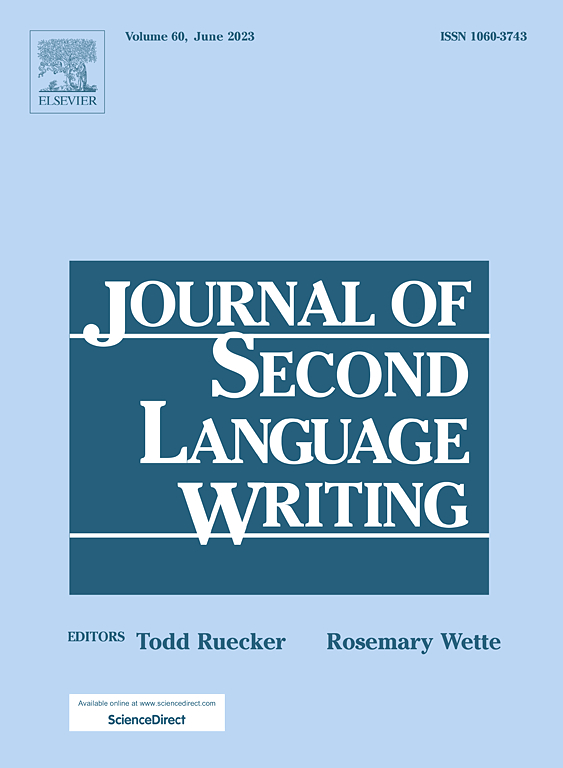Writing performance and discourse organization in L2 Chinese: A longitudinal case study
IF 4.5
1区 文学
Q1 LINGUISTICS
引用次数: 0
Abstract
The present study explored the development of writing performance and discourse organization in Chinese as a second language (L2) writing, focusing on the effects of genre and learning context. Tracking an L2 Chinese learner’s written production in two genres (i.e., narrative and argumentative) across four learning contexts (i.e., pre-study abroad, study abroad, post-study abroad, and delayed post-study abroad) longitudinally over four years, this study revealed that holistic ratings and discourse organizational devices showed distinct patterns in different genres and across learning contexts. Narrative essays generally received lower ratings than argumentative essays. Ratings of narrative essays remained relatively stable across four learning contexts, whereas those of argumentative essays displayed an omega-shaped pattern over the four-year period. Among six discourse organizational devices, subordinate clauses, textual connectives, and grammatical metaphors were used more in argumentative essays, but coordinate clauses and topic-prominent constructions were used more in narrative essays. The six discourse organizational devices exhibited discrete developmental trends throughout the four years of learning. This study provides a deeper understanding of writing performance and discourse organization in L2 Chinese development.
汉语第二语言中的写作表现和话语组织:纵向案例研究
本研究探讨了汉语作为第二语言(L2)写作中写作表现和话语组织的发展,重点关注体裁和学习情境的影响。本研究对一名汉语作为第二语言的学习者四年来在四种学习情境(即留学前、留学中、留学后和延迟留学后)下的两种体裁(即记叙文和议论文)的写作进行了纵向追踪,结果发现,在不同体裁和不同学习情境下,整体评分和话语组织手段呈现出不同的模式。记叙文的评分普遍低于议论文。在四种学习环境中,记叙文的评分保持相对稳定,而议论文的评分在四年中呈现Ω形模式。在六种语篇组织手段中,从句、文本连接词和语法隐喻在议论文中使用较多,但在记叙文中使用较多的是定语从句和主题突出结构。在四年的学习过程中,六种话语组织手段呈现出不连续的发展态势。本研究有助于加深对汉语第二语言发展过程中写作表现和话语组织的理解。
本文章由计算机程序翻译,如有差异,请以英文原文为准。
求助全文
约1分钟内获得全文
求助全文
来源期刊

Journal of Second Language Writing
LINGUISTICS-
CiteScore
8.80
自引率
13.10%
发文量
50
审稿时长
59 days
期刊介绍:
The Journal of Second Language Writing is devoted to publishing theoretically grounded reports of research and discussions that represent a significant contribution to current understandings of central issues in second and foreign language writing and writing instruction. Some areas of interest are personal characteristics and attitudes of L2 writers, L2 writers'' composing processes, features of L2 writers'' texts, readers'' responses to L2 writing, assessment/evaluation of L2 writing, contexts (cultural, social, political, institutional) for L2 writing, and any other topic clearly relevant to L2 writing theory, research, or instruction.
 求助内容:
求助内容: 应助结果提醒方式:
应助结果提醒方式:


